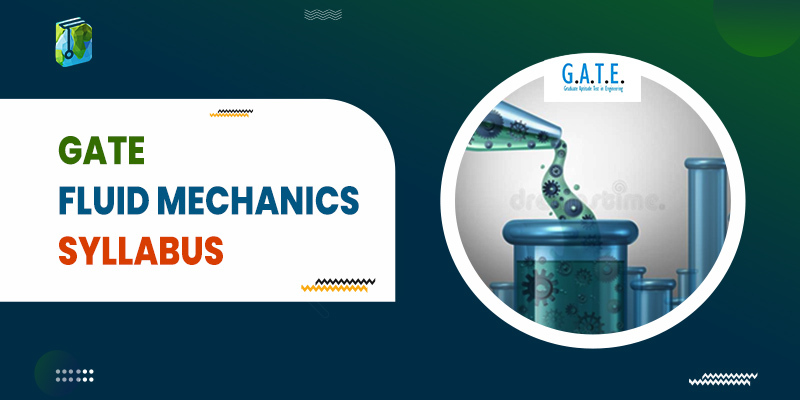Introduction
GATE Syllabus is based on the different streams according to the qualifying examination. The GATE examination consists of 29 papers. These will be conducted for admissions to the M.Tech programs which are offered by the IITs and IISCs.
This article will give you complete information regarding the GATE Fluid Mechanics Syllabus 2023.
GATE Fluid Mechanics Syllabus 2024
GATE Fluid Mechanics Syllabus Consists of 8 sections, Flow and Fluid Properties, Kinematics, Integral analysis, Differential Analysis, Inviscid flows, Dimensional analysis, Internal flows, Prandtl boundary layer equations.
Flow and Fluid Properties
viscosity, the relationship between stress and strain rate for Newtonian fluids, incompressible and compressible flows, differences between laminar and turbulent flows. Hydrostatics: Buoyancy, manometry, forces on submerged bodies.
Kinematics
Eulerian and Lagrangian description of fluids motion, concept of local and convective accelerations, steady and unsteady flows.
Integral analysis
Control volume analysis for mass, momentum, and energy
Differential Analysis
Differential equations of mass and momentum for incompressible flows: inviscid – Euler equation and viscous flows – Navier-Stokes equations, the concept of fluid rotation, vorticity, stream function, Exact solutions of Navier-Stokes equation for Couette Flow and Poiseuille flow.
Inviscid flows
Bernoulli’s equation – assumptions and applications, potential function, Elementary plane flows – uniform flow, source, sink, and doublet and their superposition for potential flow past simple geometries.
Dimensional analysis
Concept of geometric, kinematic, and dynamic similarity, some common non-dimensional parameters and their physical significance: Reynolds number, Froude number, and Mach number.
Internal flows
Fully developed pipe flow, empirical relations for laminar and turbulent flows: friction factor and Darcy-Weisbach relation.
Prandtl boundary layer equations
Concept and assumptions, the qualitative idea of boundary layer and separation, streamlined and bluff bodies, drag and lift forces. Flow measurements: Basic ideas of flow measurement using venturimeter, pitot-static tube, and orifice plate.
Conclusion
GATE Exam is not based on completing the syllabus for preparation; it is based upon completing and understanding the basic concepts. Candidates must always try to track their own performance to analyze their preparedness for the examination.
A smart preparation always goes with the method by which you can find out the correct answer within less amount of time. Try to focus on that.
Hard work surely pays off! Keep giving in your best efforts!
All the very best!
People are also reading:

